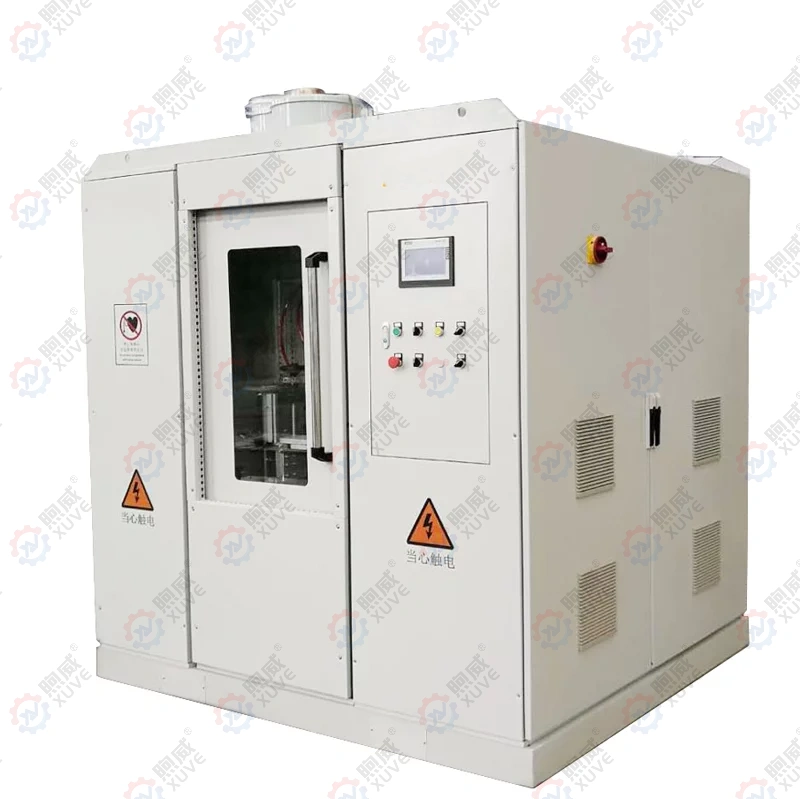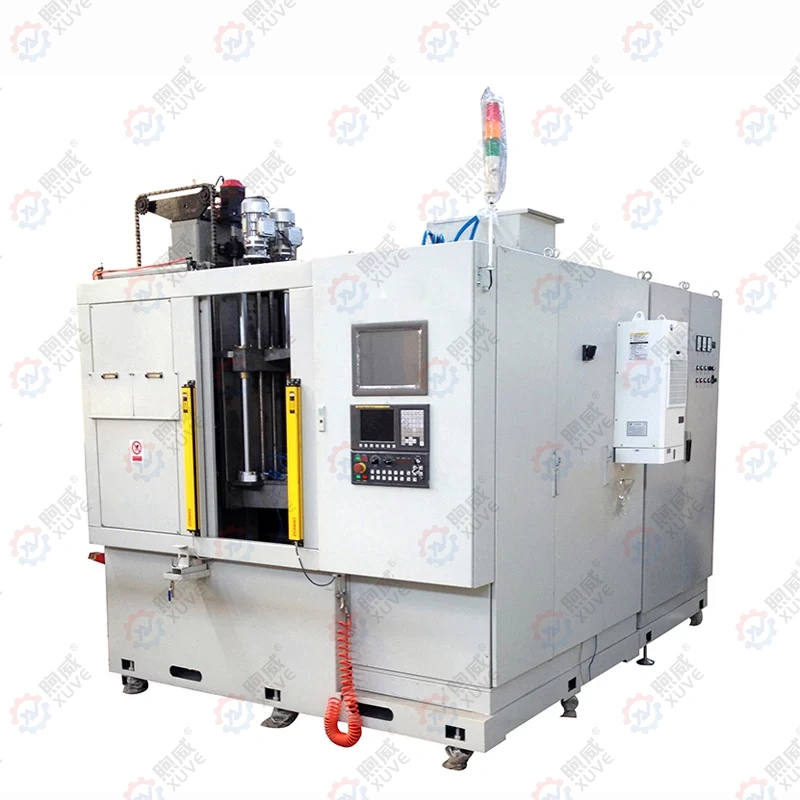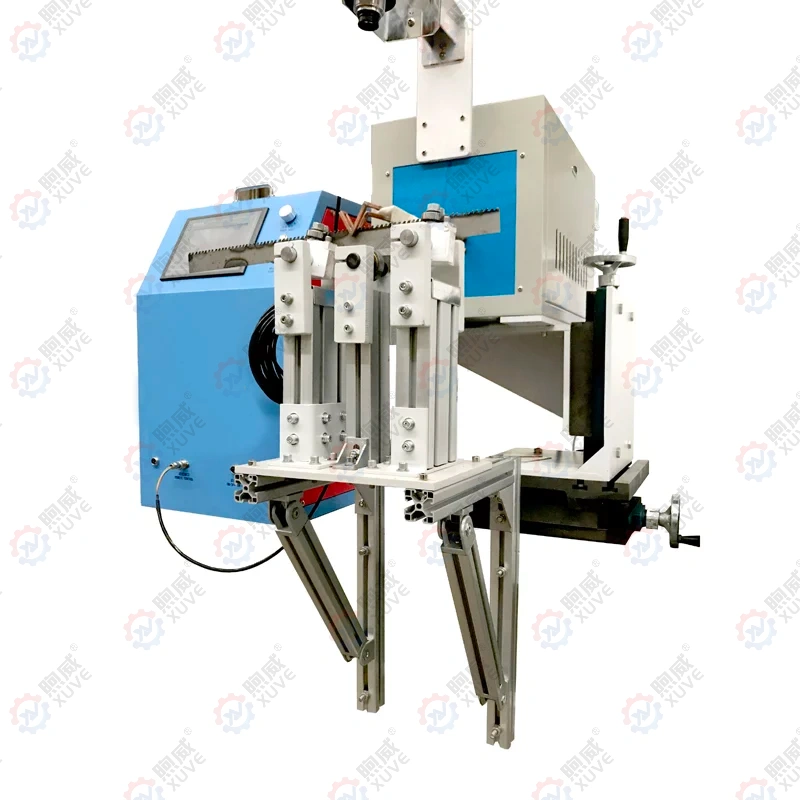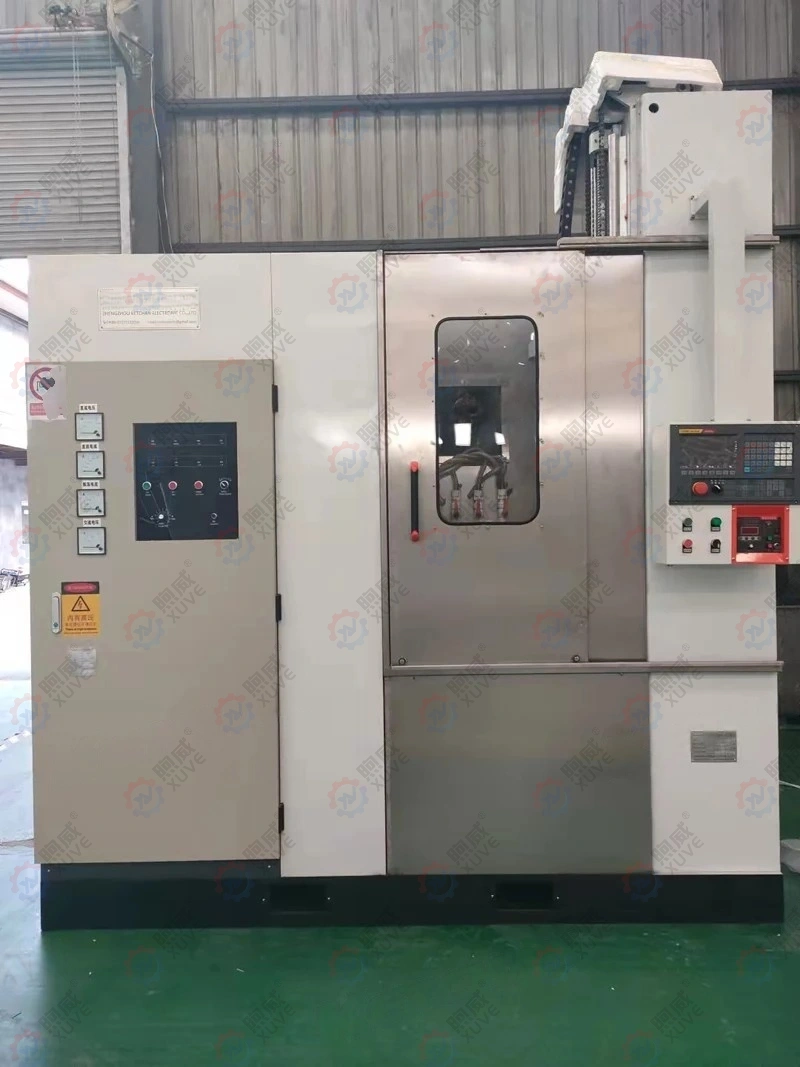What is a crankshaft induction hardening machine?
The crankshaft is the main rotating part of the engine. After the connecting rod is installed, the up and down (reciprocating) motion of the connecting rod can be changed into a cyclic (rotational) motion, which is an important part of the engine. Therefore, the production requirements for crankshafts are very high, usually requiring them to have high hardness, high wear resistance, and long service life. And this should use a crankshaft induction hardening machine. In order to make the quenching effect of the crankshaft better, we recommend our range of crankshaft hardening machines, It is mainly suitable for all kinds of crankshaft induction quenching. Each inductor process parameter of heating and cooling can be set independently, and the machine tool adopts a special thin transformer and power pulse distribution technology, which can ensure that the hardened layer in the circumferential direction of each quenching part is consistent. The independent induction suspension technology and crankshaft clamping auxiliary technology can be applied to induction quenching various crankshaft products and reduce the crankshaft quenching deformation.
The complete crankshaft induction hardening machine consists of a crankshaft induction quenching machine tool, IGBT medium frequency power supply, quenching liquid circulating cooling device, pure water cooling circulating device (including low-pressure cooling system 0.1-0.2Mpa, 0.6-0.8Mpa high-pressure cooling system), electrical control system, chiller, etc.; The equipment can perform journal quenching and fillet quenching for various four- and six-cylinder crankshafts with a length of 500-1500mm.
What is crankshaft induction hardening machine features?
- The temperature, pressure, quenching fluid flow, and cooling water are automatically monitored and protected.
- The control system has the function of fault protection, indication, and alarm.
- The power chuck, tailstock, and transformer lifting drive mechanism of the crankshaft quenching machine tool adopts pneumatic; the loading and unloading mechanism; adopts the reciprocating double material level trolley, the motor drives the synchronous belt transmission, and the lifting power of the parts is the cylinder.
- Crankshaft movement system: servo motor and ball screw are used to drive the crankshaft to move laterally, and the guide rail adopts a rectangular linear guide rail.
- Load feeding: Load rises and falls with power for the cylinder.
- This crankshaft CNC hardening machine tool is equipped with 6~15 sets of load systems (including quenching transformers, capacitors, inductors, etc.), and each set of loads can be switched to work independently; the spacing between transformers can be manually adjusted from 0 to 100mm.
- The process parameters of the load work can be set independently.
- The machine tool control system can be selected from Siemens/Mitsubishi/Fanuc/PLC+touch screen and other control systems; Each action of the machine tool has interlock protection, and various process parameters of the equipment work (including voltage, current, heating time, cooling time, heating power, frequency, spray flow, etc.) with the display or set functions.
- Process parameter monitoring can monitor and record the heating parameters of each heating part.
How to do the crankshaft induction hardening process?
Crankshaft induction hardening machine has the following four induction quenching processes.
- Crankshaft does not rotate: Use the opening and closing type inductor sleeve to heat the shaft journal to be heated, and perform spraying liquid quenching. Later, a semi-automatic crankshaft quenching machine tool was developed to quench large quantities of crankshaft journals. The advantage is that the labor intensity is low, and the disadvantage is that the hardened area is uneven. For example, the hardened layer at the top dead center of the connecting rod journal is wide, and the hardened area at the bottom dead center is narrow.
- Crankshaft rotation heating: Using a half-ring inductor, on semi-automatic or fully automatic crankshaft induction quenching machines to do the batch production. The advantage is that the temperature of the hardened zone is uniform. It can carry out journal fillet quenching and improve the fatigue strength of the crankshaft. It is a widely used crankshaft quenching process at present.
- Crankshaft does not rotate: The crankshaft journal is heated by coupling the half-ring primary coil and the half-ring secondary coil, which is called the Sharp-c process. These advantages are that the heating time is short, the heating time of a journal is about 4s, the equipment footprint is smaller than that of the rotary quenching device, and the life of the inductor is long, but this process does not solve the crankshaft fillet quenching technology problem.
- A double-half ring-type inductor is used to enclose almost the entire crankshaft journal. The advantages of this process are high heating efficiency and short time.
Why should do the crankshaft hardening process?
The residual compressive stress on the surface of induction hardened parts is reduced compared with that after the stress is relieved by heating in the furnace. The crankshaft induction hardening machine technology is not only used in various axles, and gears but also used in the heat treatment of various constant velocity joints of contemporary front and rear wheel body cars. In the quenching process, the inductor mainly affects the workpiece hardening depth, and also affects the hardening length. At the same time, it can be used to compensate for the influence of cooling water in the heating process.
At present, the induction hardening equipment on the market has entered a broad field divided into semi-automatic quenching machine tools and fully automatic quenching machine tools. The current trend is characterized by full automation, with fully automatic quenching machines even for low throughputs, freeing operators from monotonous work. On a standard semi-automatic quenching machine, the operator’s continuous repetitive actions have been gradually replaced by programmed automatic control, which selects the corresponding induction coil for the different workpieces quenching parts. At the same time, due to the improvement of the automation degree, considering the working area required for safety and installation, etc., the induction hardening equipment adopts a much smaller semiconductor control technology, which will show special advantages.







